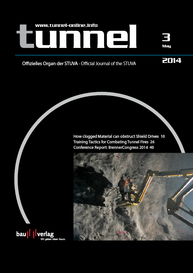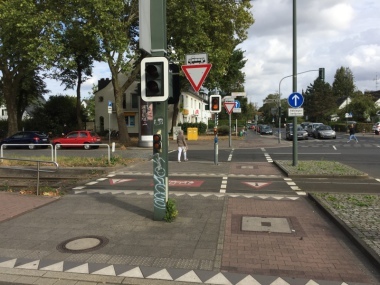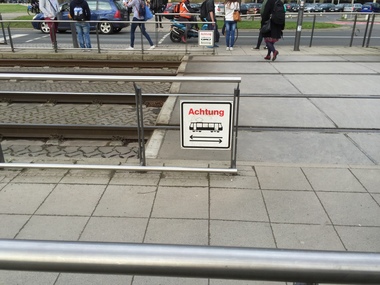“Safer Junctions for more vulnerable Road Users”
More vulnerable road users require special protection on road traffic. However, no new basic set of draft regulations relating to age or particular groups is needed. This was revealed by a study undertaken on behalf of the German Insurers Accident Research (UDV), which concentrated especially on accidents occurring at urban junctions and intersections as well as interconnections with the relevant infrastructure.
STUVA Analysis
provides new Findings
The survey carried out for the UDV was undertaken under the direction of the University of Wuppertal (BUW), Faculty of Road Traffic Planning and Road Traffic Technology together with the STUVA and the Leibnitz Institute for Occupational Research at the Technical University of Dortmund. Within the scope of the study the STUVA was responsible for analyzing in particular accident risks for disabled people as well as the interactions between barrier-free design and potential dangers affecting all road users.
It was possible to safely verify a number of already known factors of influence, which also endanger more vulnerable road users, on the basis of extensive accident analyses and traffic observations. In addition, new findings especially relating to the behaviour of older car drivers were obtained. It can generally be maintained from the extensive study that the design of the identified and analyzed accident-prone junctions frequently failed to comply with the planning recommendations contained in current codes of standards and in turn the state of the art and traffic safety. Many of the determined deficits, which in some cases were also directly related to the occurrence of accidents, would not have taken place at junctions designed in accordance with the latest codes of standards.
Recommendations for designing junctions must therefore by and large be geared to rulings contained in valid design codes of practice for urban roads and intersections as well as for traffic systems devised for pedestrians, cyclists and the handicapped. In this connection, the complete system must be considered taking the requirements of all road users into account.
More Protection
for more vulnerable Road Users
The existing valid codes of standards are also suitable for ensuring that more vulnerable road users are accorded with a high degree of protection providing they are properly applied. However stricter rules with regard to motorists turning to the left at traffic lights would help older motorists in particular quite apart from enhancing traffic safety at junctions in general. Similarly this applies to catering for adequate visibility, which represents a plus for the safety of all road users and children in particular. The design of crossing points (curb edges, ground indicators) as well as the application of visual contrasts play important roles as far as barrier-free design is concerned. Barrier-free design should as far as possible take the needs of different user groups into consideration in a balanced manner. Through this approach to design for satisfying everyone road areas should become suitable for as many people as possible without needing assistance. This is basically essential if a future-oriented road set-up is to be achieved in view of demographic developments.
The final report as well as summaries can be downloaded free-of-charge from the Internet pages of the German Insurers Accident Research:
http://udv.de/de/strasse/pla
nung-und-betrieb/stadtstras
sen/wege-fuer-fussgaenger/sichere-kreuzungen-fuer-kinder-und-aeltere





